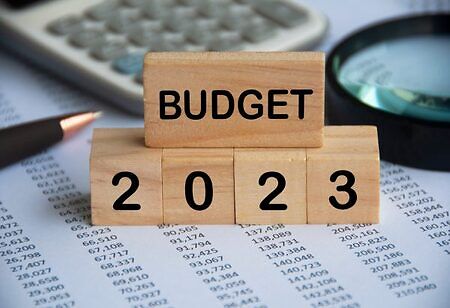
Budget 2023-2024: Is it Yay or Nay for the Salaried Class & Industries?


Currently, not only senior citizens, but the youth are also showing keen interest on what the Budget 2023 - 2024 looks like. As the recent layoffs have shaken their state of mind, with many taking to social media to express their frustrations.
Therefore, when looking at the NDA administration unveiling its final full budget before the 2024 elections, it centered on a number of initiatives that increased capital expenditure expenditures and connected several themes, such as Green Growth, Youth Power, and Inclusive Development. Along with this, there were significant tax announcements for the salaried class that included revisions to tax slabs and a stated commitment to transition to the new tax system.
Agriculture: New Scheme to Support Fisheries and MSMEs
As expected before, the finance minister made a number of statements to support the agriculture industry as a whole, including offering farmers accessible answers to problems they encounter. She unveiled a fund to accelerate the agriculture industry. The goal for agricultural finance would rise to Rs 20 lakh crore, with an emphasis on dairy, fisheries, and animal husbandry. The FM stated that there would introduce a new sub-scheme with planned investment of Rs 6,000 crore to support activities of fishermen, fish merchants, and MSMEs.
Education and Skills Development: Building Infrastructures, Promoting R&D
According to the finance minister, 157 new nursing colleges would be built alongside the 157 medical colleges that have already been operational since 2014. To promote collaborative research and innovation, ICMR labs will be made available for use by professors from public and private medical colleges as well as R&D teams from the corporate sector. She also unveiled a brand-new initiative to support pharmaceutical research and innovation. The government would also compel business to make investments in key sectors for research and development.
According to the finance minister, a national digital library for kids and teenagers would be established to make it easier to access high-quality books across all levels, genres, and languages, as well as across all geographies and device types.
Expansion Scope of Digilocker, Simplification of KYC Process
The FM recommended creating an Entity DigiLocker for MSMEs, major corporations, and charity trusts to use. This is consistent with their objective of extending the use of DigiLocker. She went on to say that the DigiLocker service and Aadhaar as the fundamental identity would be built as a one-stop shop for reconciling and updating the identity and address of people maintained by multiple government agencies, regulators, and regulated entities.
The breadth of papers available in DigiLocker for people would be enlarged, according to FM Sitharaman, to enable more creative Fintech services.
Boost to Capital Investment
The government's primary objective is still investment and job development. The finance minister stated during her budget address that the capital investment spending will rise by 33 percent to Rs 10 lakh crore, or 3.3 percent of GDP.
She added that the provision for 50-year loans to state governments without interest has been extended by a further year. With an increased budget of Rs. 1.3 lakh crore, this will be done to encourage infrastructure investment and to provide them with incentives for complementary policy actions.
New Infrastructure Development for Railways
According to the finance minister, the budget for Indian Railways would be Rs 2.40 lakh crore, which is nine times more than the budget for 2013–14.
More private investment will be made in the infrastructure sector of the railways. All parties involved in this, including those in the heavily reliant on public resources industries of trains, roads, urban infrastructure, and power, will receive assistance from the recently established Infrastructure Finance Secretariat.
PAN
According to the finance minister, the PAN will be used as a standard identity for all digital systems of the designated government agencies for businesses that are required to have one.
Fiscal Deficit Target for FY24
To accommodate the smaller fiscal deficit objective for 2023–24, it was anticipated that global commodity prices may moderate and that there would be less spending on subsidies as the government eliminates pandemic-related benefits. States will be permitted to have a fiscal deficit of 3.5 percent of the GSDP, of which 0.5 percent will go toward changes in the power sector. The overall receipts other than borrowings and the total expenditure for the upcoming fiscal year are projected to be Rs 27.2 lakh crore and Rs 45 lakh crore, respectively. The expected net tax receipts are Rs 23.3 lakh crore.
Reduction of Custom Duty on Certain Items
In addition to textiles and agricultural products, the finance minister recommended lowering some basic customs duty rates from 21 percent to 13 percent. The basic customs duties, cesses, and surcharges on a few commodities, such as toys, bicycles, and cars, will therefore be somewhat altered. Cigarettes are now subject to an increased customs tax.
Reduction in Tax Rate to 39 Percent Only for Big Tax Payers
According to FM's suggestion, under the New Regime, anyone making up to Rs 7 lakh will not be subject to taxation. The Finance Minister has suggested that under the new tax system, the highest surcharge rate for people in the highest tax band be lowered from 37 percent to 25 percent. For taxpayers in the highest tax bracket, this proposal would result in a lowering of the maximum tax rate to 39 percent. The FM also unveiled a number of suggestions for the benefit of those on salaries, the elderly, and pensioners.
Atmanirbhar Clean Plant Program
To increase the supply of high-value horticulture crops with disease-free planting material, the government intends to introduce the Atmanirbhar Clean Plant Program. The project's overall budget is predicted to be 2,200 crore. Numerous horticultural crops, including fruits, vegetables, spices, plantation crops, and flowers among others, are anticipated to benefit.